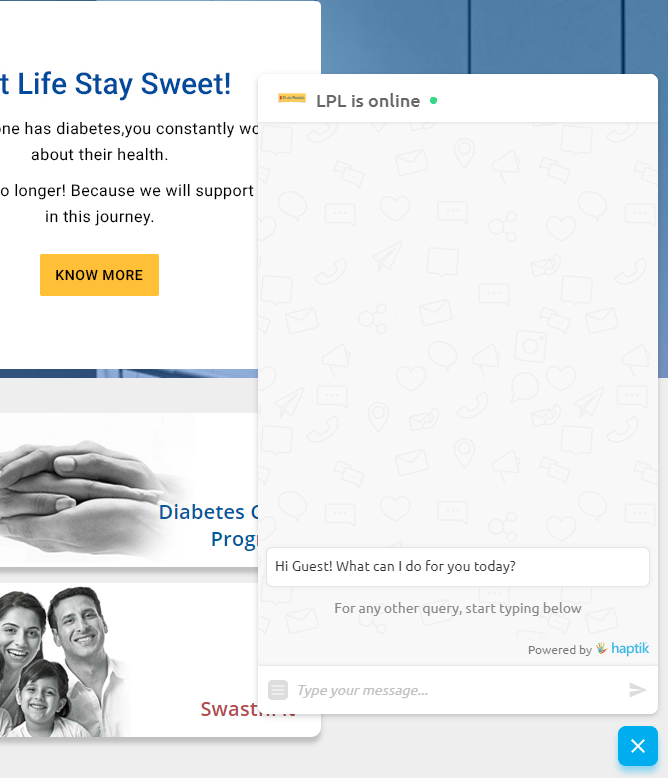Conversational Marketing Interfaces for Healthcare: Are They Right For You?
The conversational marketing interface opportunities for the healthcare sectors.
Conversations are important in all walks of life, especially in business. But we don't always seem to have time for them. There is a reason, however, why we should be making time to talk to our prospects and website visitors.
It's often the case that conversations need to happen with those coming to our websites to make business happen. It’s also likely you will need to answer questions from those who require more information about your products and services and engage in a discussion so that both parties are fully aware of what is happening.
As we are generally becoming less patient, time is of the essence and we are all required to respond to those who want to talk to us immediately. Sometimes, the sale is dependent on it. A common approach here is conversational marketing.
However, it seems that the B2B pharma sector hasn’t caught on and exploited the opportunities. But there are signs, specifically within the consumer healthcare sectors, that conversational marketing will catch up.
Subscribe for marketing insights via email
WHAT IS CONVERSATIONAL MARKETING?
Conversational marketing is almost like the return to businesses and organisations communicating like real people.
Corporate efficiency, policies and processes have sometimes restricted access to one-to-one conversations, where often an enquiry is dealt with via support tickets, FAQs, delayed emails and automated call handling systems.
Conversational Marketing is commonly the use of live chat, chatbots and other social media-based features for instant messaging. Being there and providing answers to problems, on the enquirer’s terms, to foster genuine conversations and long-term relationships. Essentially, helping that person at that moment when he or she wants that help.
Most commonly, if someone wants to genuinely find out more about an organisation, the website or it’s supporting profiles (which are always open) is the first touchpoint.
CONVERSATIONAL MARKETING TOOLS
Conversational marketing comes from the school of always being open and always being available. Being truly available means that marketing, sales or customer services employees need to operate an omnichannel system.
Email, telephone and direct mail are considered more traditional means of communication and those channels should remain open.
However, as previously mentioned, there can be a delay in response and that delay, for marketers, could mean the difference between a lead and no lead. When an organisation adopts a conversational approach this is usually no delay and this is a marketing tactic that B2B organisations in the pharmaceutical, life sciences and related industries can adopt to develop a real competitive advantage.
Here are the most common conversational marketing methods/interfaces:
WEBSITE LIVE CHAT
Live chat is a fantastic method for customers and clients to reach out to organisations for help. In the last month alone, I have used a live chat feature 7 times to get in touch with organisations for personal and professional reasons and each time the experience has been pleasant, timely and effective. More importantly, it allows for multitasking. Yes, the feature demands attention from the organisation's perspective but it's a channel that buyers want to use to buy and interact.
CHATBOTS
A chatbot is similar to live chat as it takes the form of a conversational interface, but the agent on the organisation’s side is actually a computer program designed to convincingly simulate how a human would behave. The chatbot is, therefore, always available but doesn’t demand an employee to operate it on a day-to-day basis. This feature can also be programmed to schedule meetings with employees if that real-human conversation is required. As one of the most popular messaging apps, adopting Facebook Messenger for Business is a good place to start.
MESSENGER APPS/SOCIAL MEDIA
Messenger apps, similar to live chat, exist on social media platforms. Again, speed is of the essence and users will expect that the organisations respond within a few minutes. This could be in the form of an agent or bot. Social monitoring and listening is also an important aspect of conversational marketing, where if a user posts a comment or negative review regarding an organisation on social media, the organisation should be willing to respond to address the comment, query or review, certainly if the post is a negative one.
CONVERSATIONAL MARKETING INTERFACE EXAMPLES
It seems that conversational marketing hasn’t yet taken off in the B2B science industries, and this could be for a number of reasons. Such that it is a little untested and isn't perceived as being personal enough.
But there are plenty of examples in the consumer health space that are worthy of attention that can provide some clues as to whether conversational marketing is suited to the industry. Here are just a few:
HEALTHTAP
HealthTap is a medical platform on Facebook Messenger and it allows visitors to access free healthcare via a bot. HealthTap’s database of medical answers can be queried just by typing in symptoms and conditions and its users can access a range of doctors directly via the platform.
DR LAL PATHLABS
The Dr Lal PathLabs website live chat/bot is a great example of being always open and always available. It lets users instantly check the status of their pending reports, find nearby centres, show test information and price and enables faster query resolution by guiding the user through every step.
GSK
GlaxoSmithKline was amongst the first wave of pharmaceutical organisations to adopt Twitter. GSK has since developed a successful social media (as well as social monitoring and listening) strategy, engaging with its followers and those who approach the organisation’s profiles looking for help. Helping in this way is a regular occurrence on its Twitter platform.
SAFEDRUGBOT
SafedrugBot is a messaging service that offers assistant-like support to health professionals and doctors who need appropriate information about the use of drugs during breastfeeding. It offers readily accessible drug information guides for health professionals that can perform a variety of tasks and is a great example of the potential of a B2B conversational marketing interface.
WHY SHOULD YOU ADOPT A CONVERSATIONAL STRATEGY?
It’s often cited that a conversation strategy is the future of marketing. I think this is a bit of a sensational claim. But as a communications channel for organisations to offer help to those who need it, conversational marketing is perfect.
Humans used to be good listeners but somewhere along the way something changed and the personal touch was lost. However, innovative technology and changes in customer behaviours are bringing back one-to-one conversations, as seen via the examples above.
Here are some benefits of adopting a conversation marketing strategy for CMOs, CROs and ingredients, packaging and processing companies.
MAKING IT EASY TO CONTACT/ENGAGE WITH YOU
The word “engagement” is thrown around too often without cause in the marketing industry. However, conversational marketing is all about engagement: Having others interact with an organisation’s people and its subsequent assets. The conversational methods/tools above all make it possible to engage with an organisation or brand. Even more so because there are no language barriers. Of course, when contact is made, you will also have gained access to the enquirer's contact details.
PROGRESS A SITE VISITOR INTO A LEAD
Conversational interfaces are great for customer service, but they are also great for lead generation and nurturing. This is certainly the case within the B2B sectors. If the website visitor is unaware of what content is available on a website or what content solves the issue in hand, a chatbot can provide the required content and can then determine which part of the buyer’s journey the visitor is at based on how that content is consumed. Alternatively, salespeople love getting their hands on new prospects!
QUICKLY DETERMINE WHO THE BEST EMPLOYEE IS TO DEAL WITH THE ENQUIRY
Often when people reach out to organisations with an enquiry, it takes some time until the correct employee is assigned to that enquiry. An interface as such can avoid this, as the appropriate agent can be assigned to the visitor from the first instance and therefore avoids the unpleasantness of having to wait in between transitions, putting the enquirer in the hands of the appropriate agent right away.
IF YOU ADOPT INBOUND MARKETING, YOU ARE JUST BEING EVEN MORE HELPFUL
As inbound marketing consists of creating content with the purpose of being helpful, how better way to offer more help by being there to provide those details immediately? If your organisation has adopted an inbound marketing strategy, or are blogging or producing content, then a conversational interface will help achieve your objectives of building relationships with cold website visitors by offering expert support in real-time.
B2B MARKETERS ARE SLOWLY SENSING THE NEED FOR CONVERSATIONS...
Interestingly, HubSpot state that it “missed out on 40% of potential sales meetings in Q1 simply because reps failed to show up." And this is the key element of a conversational strategy: Timeliness.
B2B organisations are beginning to realise that conversational marketing is helping them increase customer satisfaction, improve conversion rates and increase the number of leads coming in through the website. Integrated with a CRM system, it conversational interfaces can contribute within all stages of the buyer's journey, from the awareness to the consideration to the decision stage, and even beyond that.
The conversational interface, however, should always provide rich customer experiences, not hindering it in any way. The appropriate tool should be deployed not just for the sake of being deployed and should always support an organisation's marketing/brand strategy. What is certain is that conversations can aid business processes at all levels and can strengthen the bond between both parties.






